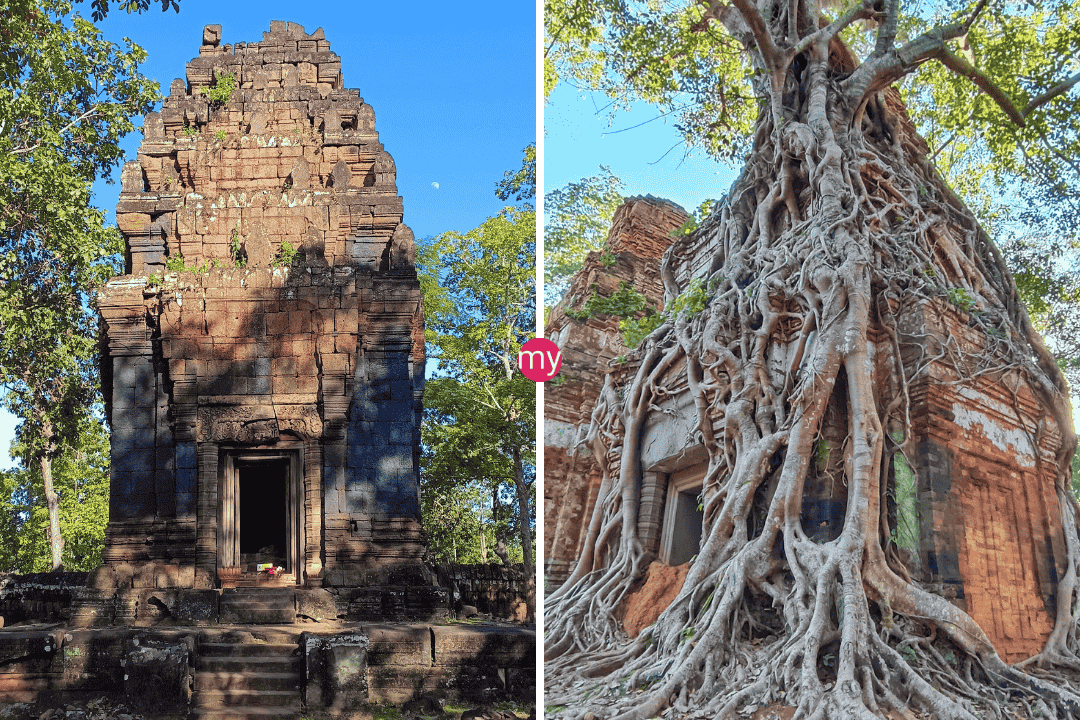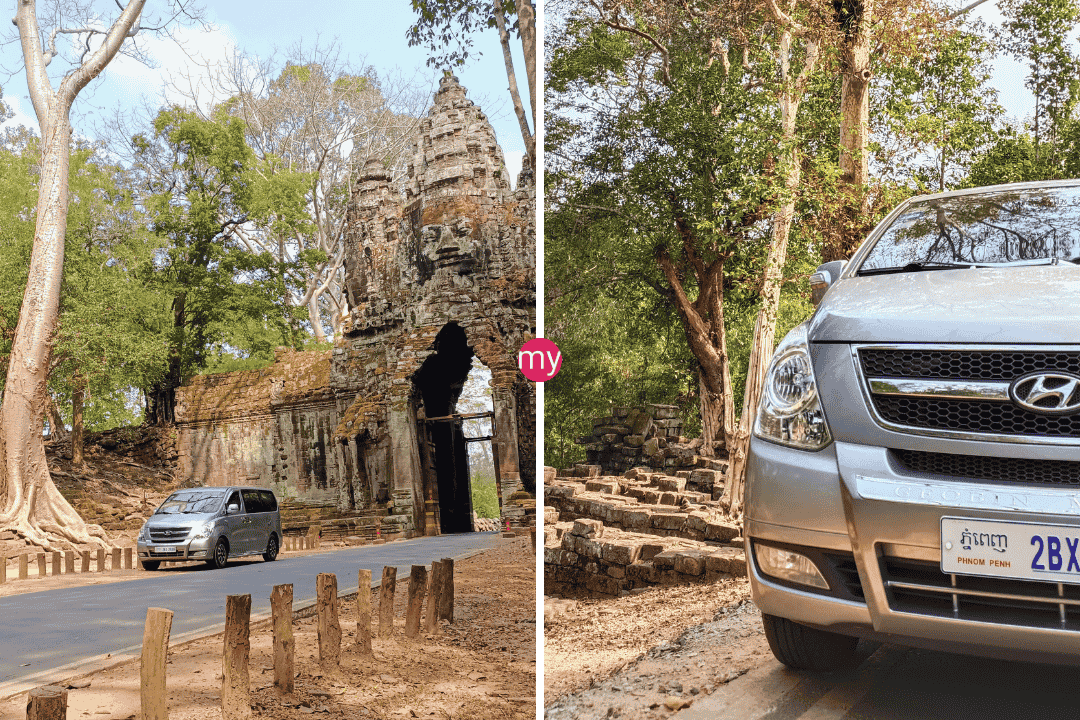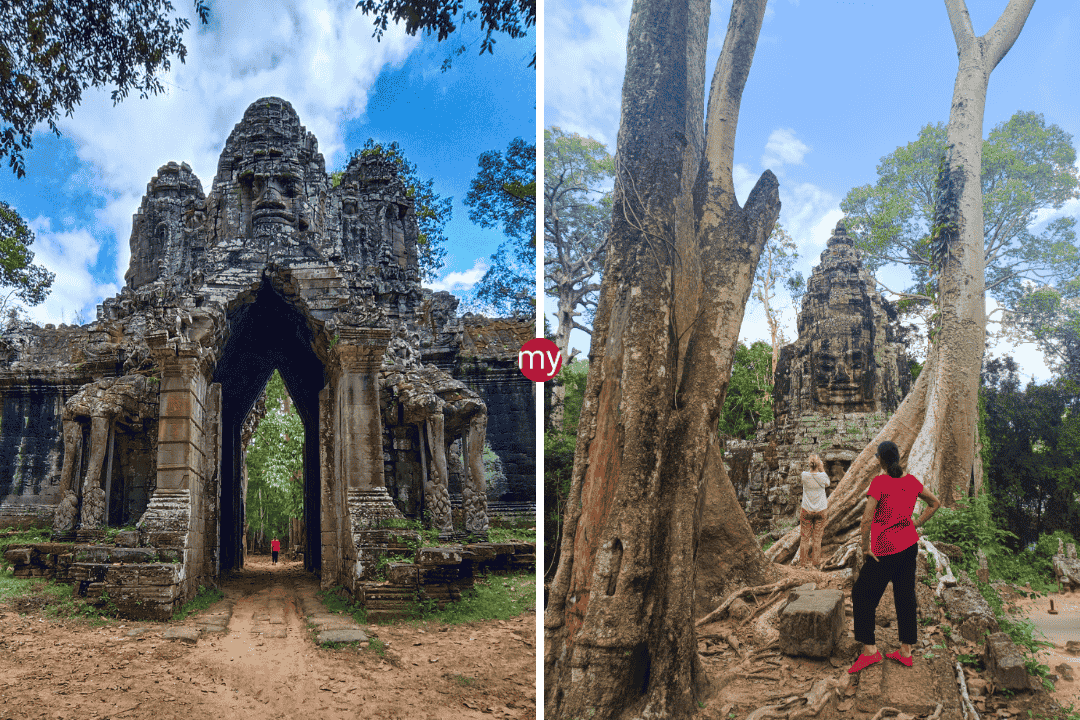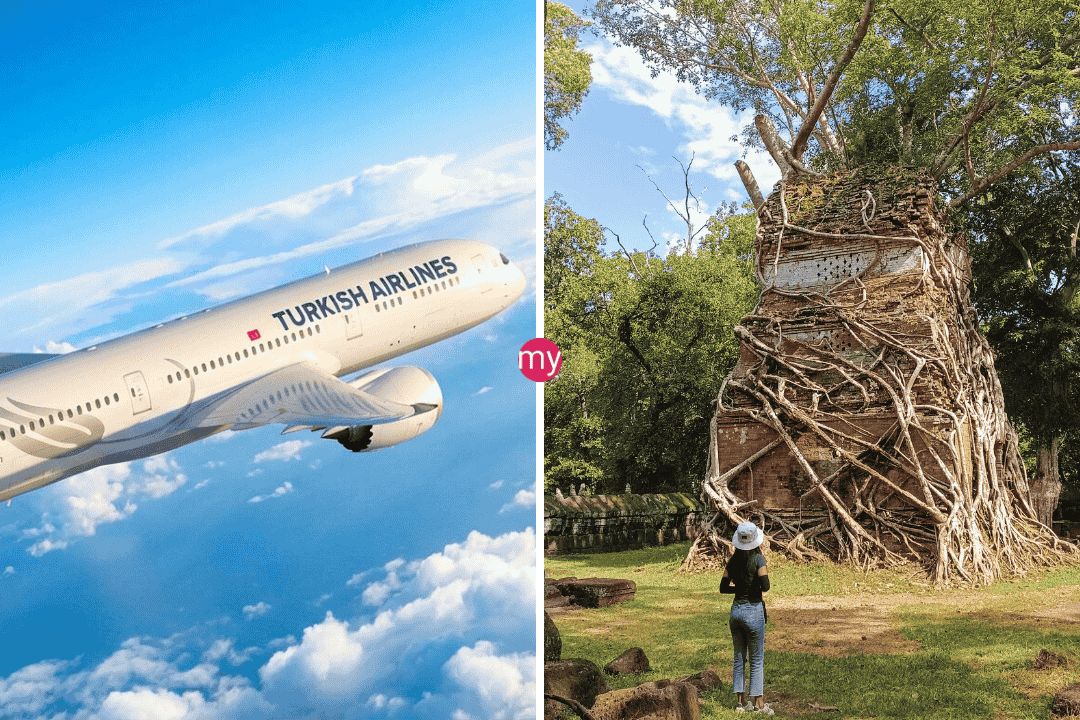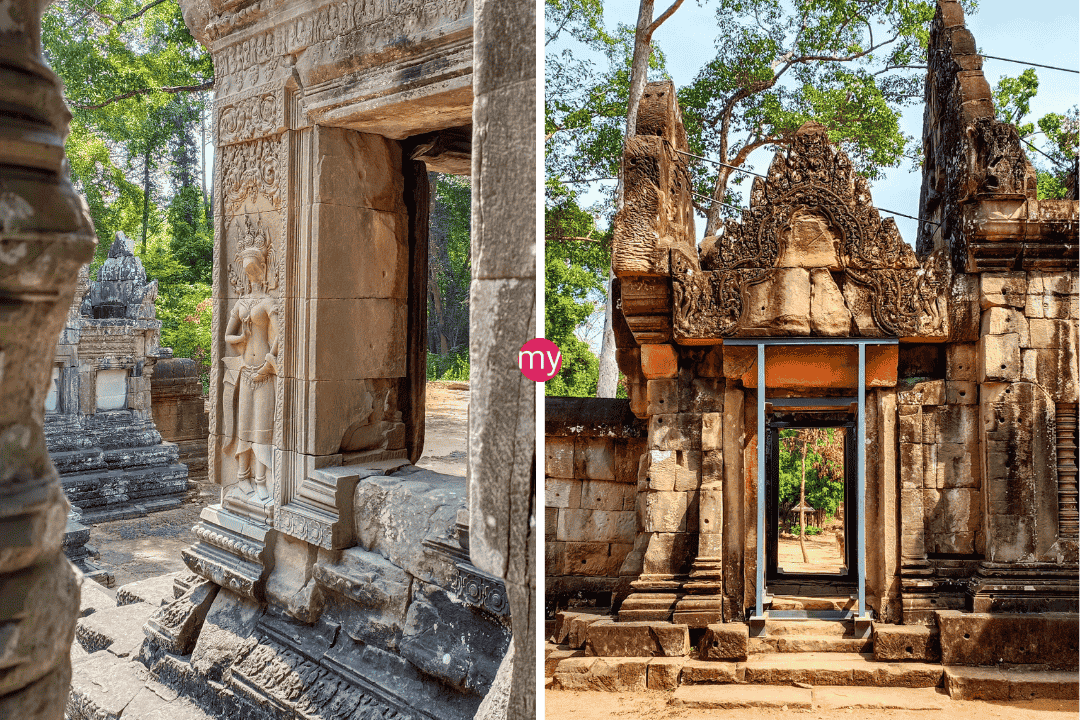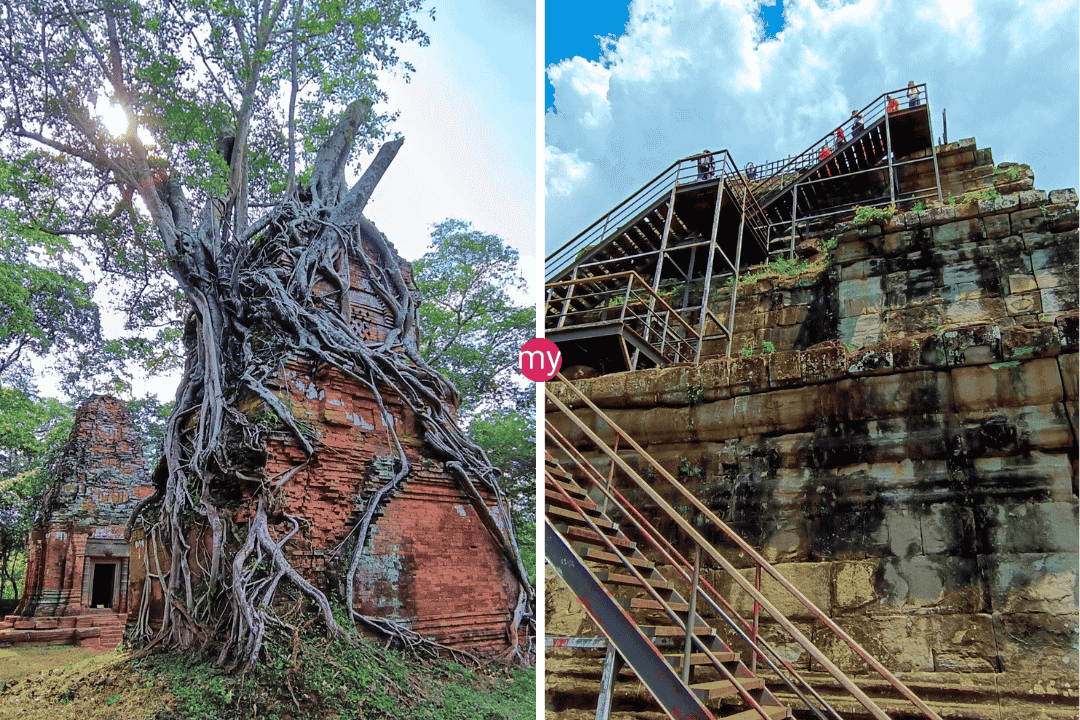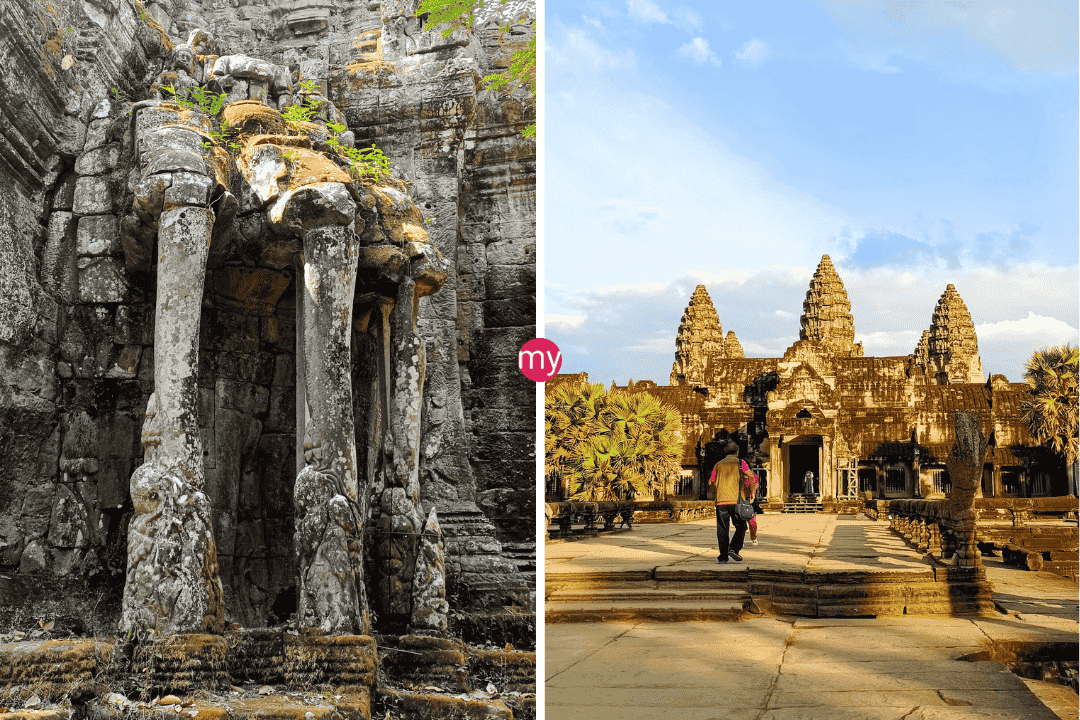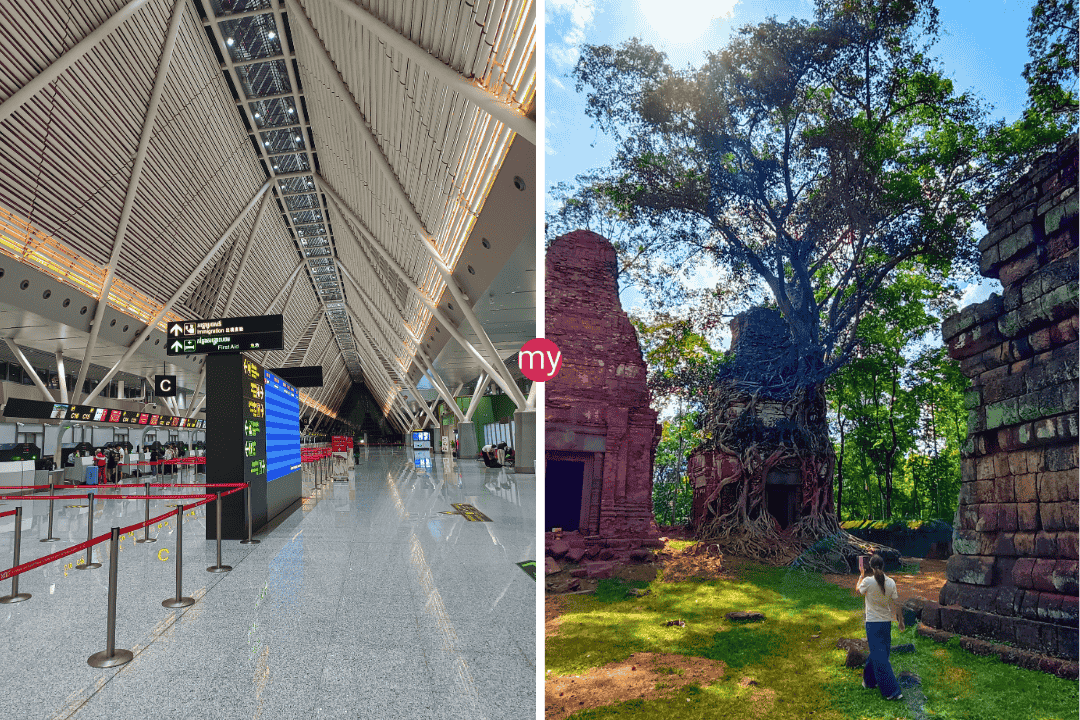Best Time to Visit Angkor Wat and Other Siem Reap Landmarks
Experience the magic of Angkor Wat and Siem Reap’s incredible temples at the most opportune times. This definitive guide from a longtime resident insider provides invaluable tips on ideal weather, seasons, and months for witnessing these landmarks in all their grandeur.
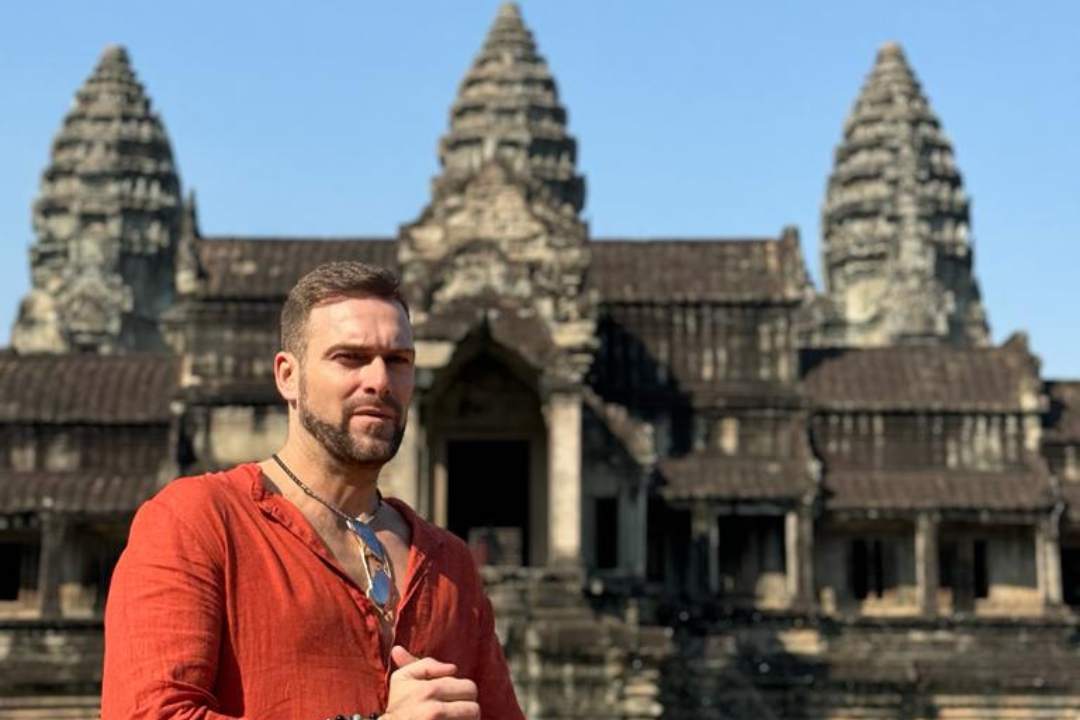
Best Time to Visit Angkor Wat and Other Siem Reap Landmarks
Siem Reap is home to some of the most awe-inspiring landmarks in the world. Chief among them is the incomparable 12th-century Angkor Wat, the largest religious monument on Earth. With its intricate stonework bas reliefs depicting scenes from Hindu epics, Angkor Wat is considered one of humanity’s greatest architectural achievements.
However, to fully experience the magic of Angkor Wat and other incredible Siem Reap landmarks like Bayon Temple, Ta Prohm, and Banteay Srei, timing is everything. Cambodia’s weather patterns and seasons greatly affect when it’s ideal to visit these outdoor landmarks as well as take part in other activities around Siem Reap.
After consulting with our guests and travelers, numerous traveler forums, weather sites, and Siem Reap tourism data, we’ve compiled the quintessential guide for discovering the best time to visit Angkor Wat and other Siem Reap landmarks. Read on to find the optimal months and seasons to witness these landmarks and make the most of your Siem Reap vacation.
Key Takeaways:
- Ancient Astronomical Alignments – Angkor Wat’s architecture incorporates solar alignments best seen at sunrise/sunset in clear skies from Nov-March.
- Rainy Ruination – September-October monsoons bring heat, humidity, flooding and cancellation risks requiring backup temple plans.
- Cultural Celebrations – April’s New Year Water Festival provides a lively, colorful experience despite hotter temperatures.
- Temple Tranquility – Wet season’s fewer tourists allow more peaceful appreciation of iconic sites like Bayon, Ta Prohm and Banteay Srei.
- Rural Immersion – Lesser known villages, handicrafts, and outdoor markets offer glimpses of local life during quieter off-peak periods.
- Planetary Precision – Angkor Wat’s precise solar orientation patterns remain marvels of 12th century engineering astronomical calculation feats.
When Are the Best Months for Visiting Angkor Wat?
Angkor Wat’s layout and orientation were designed specifically based on solar patterns observed by its 12th-century architects and astronomers. This makes sunrise and sunset prime times to marvel at the temple’s alignment and enjoy the interplay of light and shadow across its detailed stone surfaces.
During overcast weather or the rainy season when Cambodia experiences frequent downpours and storms, there may be limited opportunities to see Angkor Wat at all hours, let alone sunrise and sunset.
For this reason, it’s crucial to choose months when Cambodia enjoys clear blue skies, moderate temperatures, and low humidity. Let’s examine the ideal stretch for Angkor Wat weather patterns conducive to exploration and photography or simply soaking in its beauty.
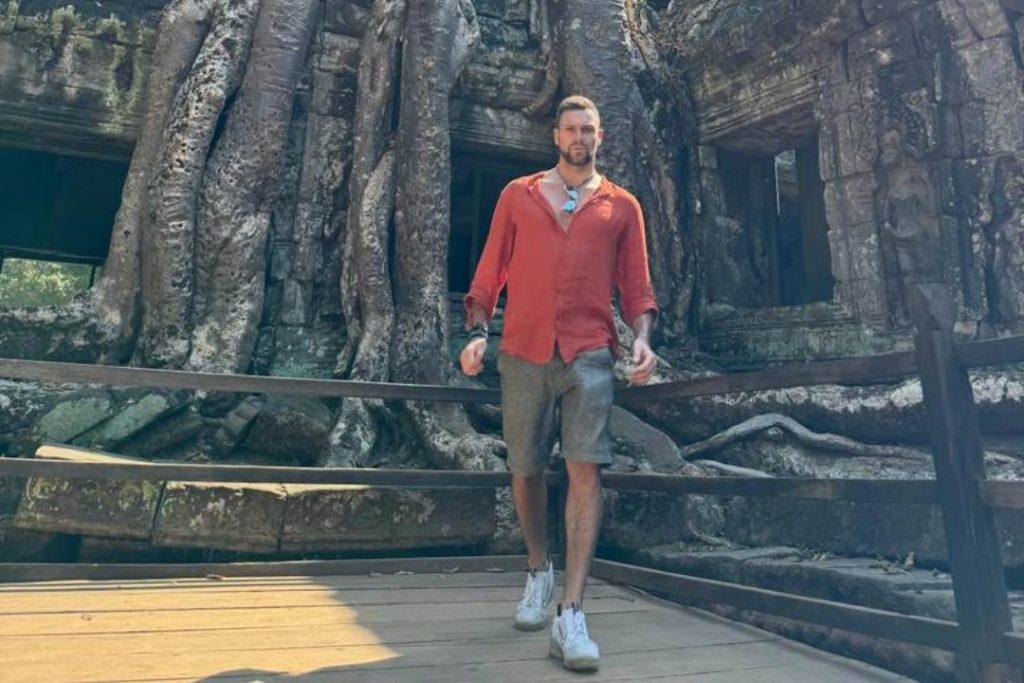
Angkor Wat Peak Tourism Seasons: December Through March
The months of December, January, February, and March comprise the dry season when Cambodia basks in hot, sunny weather with very little chance of rainfall. During this peak tourist time, humidity levels are lower, and temperatures typically range between a comfortable 25 to 30 degrees Celsius or 77 to 86 degrees Fahrenheit.
Angkor Wat and Sunrise Viewing chances are extremely favorable in these cooler and drier months. Mornings are pleasant for exploring ruins while avoiding intense midday heat and humidity. The clear skies create stunning backdrops at sunrise and sunset — perfect for photos. The odds of cancellations due to inclement weather are also quite low compared with other months.
Angkor Wat Weather Patterns tend to remain very steady from January through March, making these ideal months for planning excursions to visit the temples, knowing that last-minute itinerary changes due to storms will be rare.
Cambodian Holiday Calendar: Note that some areas may experience higher crowds and hotel rates over Christmas and New Year’s holidays in late December/early January, as well as during the Chinese New Year (typically in February). However, visiting during these lively cultural events also has advantages, so plan accordingly if traveling during these holiday peaks.
Recommended Months: For the highest probability of good weather, low rainfall, and manageable tourist levels for Angkor Wat Travel Planning, we specifically recommend January and February in particular, before the threat of scorching heat and humidity ramps up in March and April. But the entire stretch of December through March offers superb atmospheric conditions for experiencing Angkor Wat and other Siem Reap sites in all their grandeur.
Step into a world where ancient wonders meet the magical glow of dawn! The “Private Angkor Wat Sunrise Tour” isn’t just a trip; it’s a journey through time, unfolding the secrets of a civilization at the break of day. Imagine the sun rising over the majestic spires of Angkor Wat, the tranquil silence, and the awe-inspiring beauty. Ready for an unforgettable experience? Click here to embark on this exclusive adventure!
Private Angkor Wat Sunrise tour – Private Sunrise Guided Tour [Go to Angkor Wat early and avoid the crowds]
Which Months Should Be Avoided for Visiting Angkor Wat and Other Temples?
With humidity, monsoons, and potential flooding factored in, the least ideal time for Angkor Wat can be pinpointed as May through October, with the worst conditions typically occurring in September and October. However, this tropical wet season still warrants consideration by some travelers, so let’s break down this “off-season” in more detail.
Cambodia/Siem Reap Public Holidays Bonus: An excellent month for experiencing local pageantry and cultural events is November during Bon Om Touk (Water Festival). This vibrant annual celebration signals the end of the rainy season with boat races, fireworks, and street parades coinciding with cooler and drier weather.
Siem Reap Rainy Season: June through October
During these rainy months, you can expect very hot, humid days with increased afternoon storms and rainfall, especially at their height in September and October. The main drawback of the Monsoon Season in Cambodia is disruption to itineraries and the occasional closure of some attractions due to flooding. Outdoor areas can also become quite muddy and slick. Temperatures exceeded 30 degrees Celsius or 86 Fahrenheit for much of this period with stifling humidity- not ideal for long days exploring ruins.
Rainy Season Travel Advice: June and July see the rainy period just beginning, so some may still enjoy lower hotel rates and airfares despite hotter weather. And even in the wettest months of September and October, rainfall tends to occur in sudden mid-day downpours, leaving mornings and evenings with clearer skies for touring the temples.
While we cannot definitively recommend traveling during the wet season for Ideal Angkor Wat Tour Dates, it can still be worthwhile for some vacationers who plan ahead for potential disruptions and dress appropriately for heat, humidity, and sudden rainstorms. But expect higher likelihood of itinerary changes from originally scheduled plans.
Peak Rainy Season – Months to Avoid For Temple Visiting Weather Tips: September and October should probably be avoided except by seasoned Southeast Asia travelers accustomed to monsoon rains. For first-time visitors, these two months pose the highest chance of disappointment and lost vacation funds due to flooded areas, impassable roads, and canceled bookings.
Optimal Seasons and Weather to Experience Siem Reap Beyond Angkor Wat
While timing your Angkor Wat visit based on sunshine and minimal rainfall is critical, choosing the right seasons and months for exploring the rest of Siem Reap involves additional factors beyond the weather — namely, crowds, prices, and unique cultural events in the area.
Ideal Time Frame for Siem Reap Peak Tourist Seasons
Similar to scheduling a tour of Angkor Wat itself, the surrounding areas of Siem Reap are best visited from December through February for ideal conditions beyond just the climate, even though weather remains an important aspect.
Key advantages of peak tourist season include:
- Comfortable daytime temperatures are ideal for sightseeing and outdoor dining
- Low chances of heavy rainfall and flooding
- Lower hotel costs and airfares outside of the Christmas/New Year holiday period
- Enhanced experiences with higher staffing and more vendors/attractions open for tourists
While these peak months draw more visitors to the region overall, savvy travelers who research top-rated, less-hyped locations can still find areas without massive crowds, even at this tourist-friendly time of year with mild weather.
December, January, and February are the most popular months and arguably have the most to offer visitors coming from afar, with lower discount travel packages available right before the winter holiday travel rush in late December.
Khmer New Year Bonus: As a special bonus, the colorful mid-April Khmer New Year Water Festival is celebrated across all of Cambodia and draws revelers from neighboring countries as well. Just be prepared for much hotter and more humid conditions than in the winter months, with some chance of short afternoon downpours.
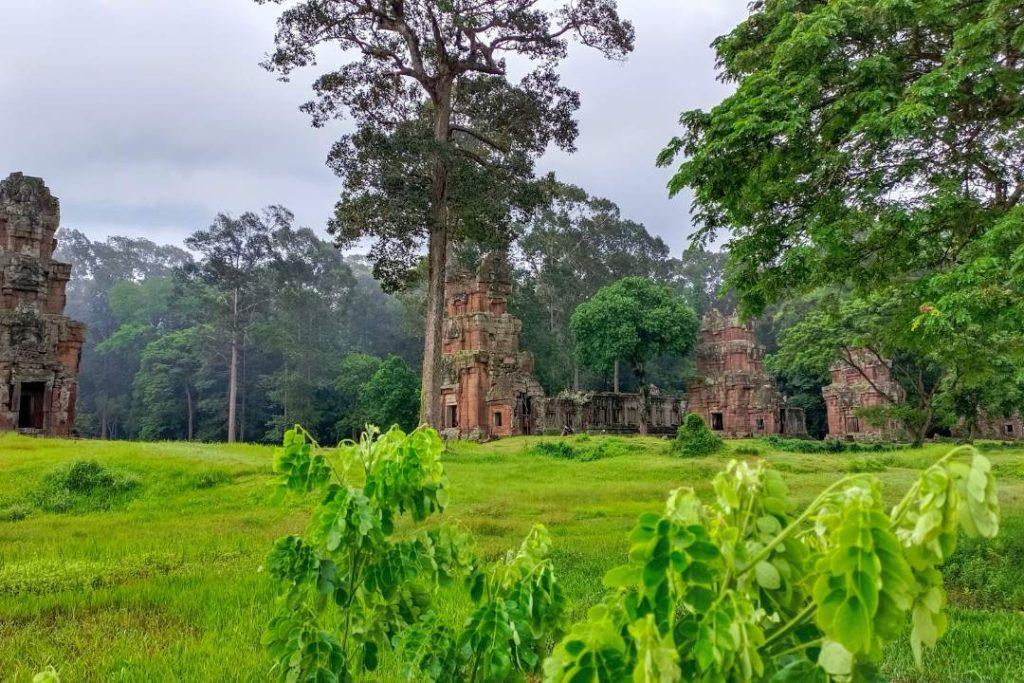
Ideal Time Frame for Siem Reap Low/Wet Season
Although less ideal for optimal weather conditions, June through September still draws many visitors with lower costs and an opportunity to experience Siem Reap and its rural areas, villages, and secondary sites beyond the main Angkor Wat temple complex.
Crowd Avoidance in Angkor Wat: Even in September and October, the main temples may have fewer guests willing to endure the heat and sudden monsoon rains. Early mornings tend to offer the clearest weather before daily storms typically occur.
Siem Reap Off-Peak Travel: Rural areas, floating markets, farms, countryside accommodations, and lesser-known craft villages and attractions become a bit more accessible and personal during quieter off-season periods. Just bring an umbrella and plan for potential itinerary changes!
Siem Reap Climate Guide: Month-by-Month Breakdown
For a quick visual overview of the yearly climate patterns and monthly breakdown of seasons in Siem Reap, please consult our original chart below. We’ll then go deeper into each period and month.
Quick Climate Guide: Rainfall, Temperatures, and Humidity at a Glance
| Month | Rainfall (mm) | Avg. Temp (°C) | Humidity (%) | Notes |
|---|---|---|---|---|
| Jan | 2 | 27 | 64 | Low rainfall; comfortable with lower humidity |
| Feb | 5 | 29 | 63 | Increasing temps but warm and dry, clear skies |
| Mar | 11 | 32 | 59 | Hotter with more humidity |
| Apr | 38 | 33 | 61 | Very hot; short storms |
| May | 121 | 32 | 64 | High humidity; thunderstorms begin |
| Jun | 155 | 31 | 71 | Rains increasing, high humidity |
| Jul | 210 | 31 | 72 | Heavy storms begin |
| Aug | 208 | 31 | 74 | Humid with rain and flooding |
| Sep | 243 | 30 | 79 | Peak rainfall and humidity |
| Oct | 209 | 30 | 77 | Rainfall subsiding; muddy conditions |
| Nov | 53 | 29 | 74 | Rains tapering off into dry season |
| Dec | 8 | 27 | 71 | Clear, mild days return |
Dry Season Weather – Best Time to Visit Siem Reap: November to March
Siem Reap’s Arid Conditions: Perfect for Tourists
The period from November through March marks the dry season in Cambodia, when the chance of rain is very minimal, and sunny days with low humidity make for ideal temple exploration and outdoor activities around Siem Reap. While the “cooler” winter months of December and January are preferable for comfort, November and February still see lovely blue skies and warm daytime highs.
Best Months for Angkor Wat Travel: January and February
The month of January sees an average high temperature of just 27 degrees Celsius or 81 degrees Fahrenheit, making it exceptionally comfortable for hours in the temples. Humidity hovers around 64%, so conditions feel less sticky and miserable than they did during the sweltering wet season. Just 2mm of average rainfall means basically none.
Very similar numbers are recorded for February, with a bit more rainfall around 5mm. But daytime high temperatures just under 30 degrees Celsius or 86 Fahrenheit still make for wonderful weather to explore ruins without getting overheated or caught in sudden storms like the rainy season months experience.
November and March Still Ideal (Just Warmer)
As the shoulder months, November and March in Siem Reap still offer preferable conditions compared to the wet season. Skies stay mainly clear – a prelude to November through February’s optimal dry period.
But temperatures begin to rise significantly in March. You’ll feel the 32 degrees Celsius daytime highs starting to increase uncomfortably. Humidity declines to a decent percentage, but heat combined with more tourists makes March more tiring.
We recommend traveling in absolute peak months like January/February if heat tolerance is lower. But November provides a nice shoulder month right as the dry season kicks off with cooler high temperatures under 30 degrees Celsius.
Hot Season Weather: April and May
The period comprising April and May brings rapidly rising temperatures and the onset of short but sudden daily afternoon thunderstorms to the Siem Reap area. Humidity is also escalating, creating a hot, muggy feel with much less relief after sunset. Temple exploration can be grueling and tiring during these months.
April Weather Trends: April marks the beginning of very uncomfortable weather for visitors unused to tropical Southeast Asian heat and humidity. Daytime highs now exceed 33 degrees Celsius, and with the climbing humidity reaching 61% in April, it simply feels miserably hot and muggy with sudden short downpours. Some areas may flood briefly after these late afternoon storms before the sun sets. It is not an easy month to endure exploring ruins for long hours unless you are well-acclimated to this level of heat and humidity. Rain totals more than triple compared to March, but full-on monsoons have not yet begun.
May Weather Patterns: Bringing no relief, May equals April with average high temperatures of 32 Celsius and even higher humidity now peaking around 64%. Rain totals jump from just 38mm in April to over 121mm – a sizeable increase in downpours and lengthier daily storms compared to quick April afternoon thunderstorms. Advisable to avoid this month for anything beyond brief essential temple touring in the milder morning hours (before 10 am). The heat and humidity simply drain energy fast otherwise. Do indoor activities or lounge by a pool after exploring early if visiting Siem Reap in May.
Wet Season/Peak Rainy Months: June through October
The term monsoon season becomes very real across Cambodia between June and October each year. Persistent rains, muggy conditions, and both evening and midday thunderstorms dominate these summer and early autumn months. Expect a high chance of significant flooding, especially in September and October that may preclude certain excursions or site visits depending on road conditions. Humidity is also most oppressive during these months. It is not ideal for tourism unless prepared with backup plans and an attitude of going with the tropical flow!
June and July Weather Summary: The early stage rainy season months of June and July see rainfall totals sharply increasing up to triple the May amounts. Daytime highs still hover in the low 30s Celsius but combine with climbing humidity levels of 70+ % to feel ridiculously muggy and sticky. Torrential downpours come without much warning and often halt outdoor touring plans. Flooding begins but is less extreme than later rainy season months. Visitors during June/July must accept weather disruptions in exchange for lower tourist numbers and prices. Come prepared with proper gear and backup touring plans.
August through October Weather: August matches July’s 210mm of rain, and September exceeds 240mm on average – very significant accumulation. October begins a gradual decrease in rainfall to end the wet season but remains quite active for sudden storms and showers. Flooding can be quite severe in September and October, preventing access to some temples and even causing regional airport closures at times. Humidity peaks close to 80%, adding extreme misery and discomfort to already steamy 31-degree Celsius days. Only experienced Southeast Asia monsoon veterans should attempt to travel during the peak rainy season period. All visitors these months should expect delays, detours, and rescheduled itineraries due to weather.
That summarizes our complete guide to choosing the ideal timeframe and months for visiting Angkor Wat and fully exploring everything Siem Reap has to offer travelers. While the November through March period offers the highest odds for pleasant weather and ease of touring, some exceptions apply, and the off-season months still provide exciting glimpses into rural Cambodian culture and local charm.
We welcome you to journey to magnificent Siem Reap any time with an open mind, a sense of wonder, and readiness for surprises along the way! Please contact us to help craft your custom Siem Reap landmarks adventure.
Featured
Explore more on My Siem Reap Tours
Koh Ker and Beng Mealea guided tour | Banteay Srei temple tour semi-private guided tour | Angkor Wat Sunrise shared tour | Koh Ker and Beng Mealea guided tour | Morning Siem Reap floating village tour | Afternoon Siem Reap floating village tour | Private Angkor Wat special tour | Kulen Waterfall small group guided Tour | Private Angkor Wat mix temples photo tour
